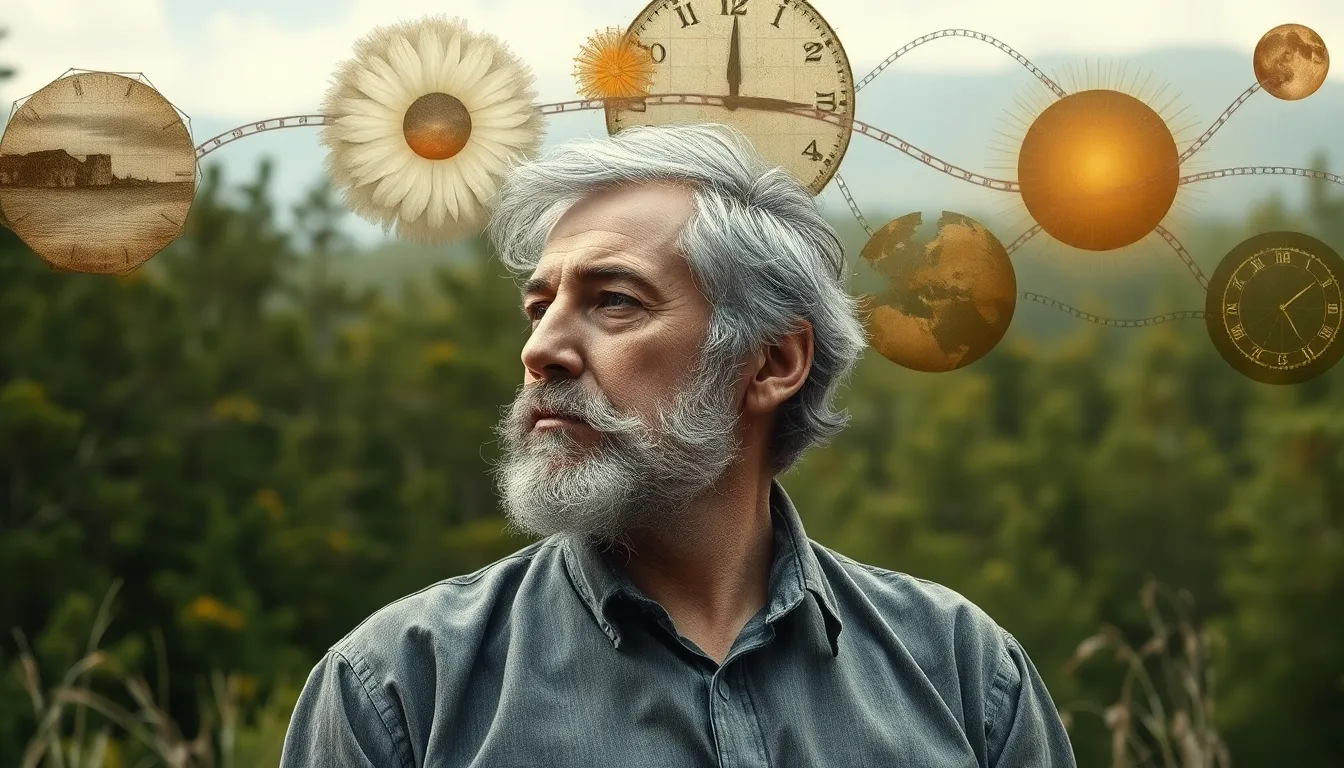Table of Contents
TogglePentachronism is a fascinating concept that challenges our traditional understanding of time. It suggests that time isn’t just a linear progression but can be experienced in multiple dimensions simultaneously. This idea opens the door to a richer exploration of how individuals perceive their past, present, and future.
In a world where the pace of life accelerates, pentachronism offers an intriguing lens through which to examine our experiences and decisions. It invites readers to consider how their lives are shaped not just by the moments they live but by the myriad possibilities that exist alongside them. Embracing this perspective can lead to deeper insights into personal growth and the interconnectedness of time itself.
Understanding Pentachronism
Pentachronism challenges traditional views of time, suggesting a multi-dimensional experience rather than a linear progression. This alternative perspective invites deeper exploration of personal experiences and decisions.
Definition and Origins
Pentachronism refers to the concept of experiencing time across five distinct dimensions simultaneously. This term derives from the Greek prefix “penta,” meaning five, and “chronos,” meaning time. Its origins trace back to philosophical discussions about time in various cultural contexts, including ancient philosophy and modern theoretical frameworks in physics. Pentachronism stands distinct from other theories of time by asserting that individuals can perceive past, present, and future experiences concurrently, impacting their understanding of life and choice.
Key Concepts and Principles
Pentachronism encompasses several key concepts and principles:
- Simultaneity: It emphasizes the simultaneous experience of multiple temporal dimensions. Individuals can engage with different time frames at once, influencing their current perceptions and decisions.
- Interconnectivity: This principle highlights how separate moments in time can influence one another. Experiences from the past can resonate with present and future situations, demonstrating the interconnected nature of time.
- Non-linearity: Pentachronism rejects the notion of time as a straight path. It presents time as a complex web of experiences and possibilities rather than a sequential journey.
- Personal Perception: The concept underscores individual perception, suggesting that each person’s experience of time is unique. This personalization allows for diverse understandings of how events shape one’s life.
- Temporal Awareness: An increased awareness of time dimensions enables individuals to make more informed decisions. Understanding these interactions can enhance personal growth and decision-making processes.
Engagement with pentachronism encourages individuals to reflect on their relationship with time and consideration of the broader implications of their experiences and choices.
Theoretical Framework of Pentachronism
Pentachronism presents a multifaceted view of time, offering deeper insights into how individuals engage with their experiences. Understanding the theoretical framework involves examining its philosophical implications and comparing it to other time concepts.
Philosophical Implications
Pentachronism invites exploration beyond conventional linear perceptions of time. It posits that past, present, and future events coexist and intersect, influencing individual decisions and shaping experiences. This perspective addresses the complexity of human existence, as it recognizes multiple temporal dimensions affecting personal growth. Philosophers such as Henri Bergson and Martin Heidegger provide foundational insights into time’s fluidity and subjective nature, contributing to the understanding of how pentachronism operates. By acknowledging the interplay of various temporal dimensions, individuals become more aware of their unique positions within the continuum of existence, enabling richer interpretations of their life narratives.
Comparative Analysis with Other Time Concepts
Pentachronism distinguishes itself from traditional linear and cyclical time concepts through its emphasis on simultaneity and interconnectivity. Unlike the linear model, which views time as a straight path from past to future, pentachronism asserts that multiple timelines exist simultaneously. In contrast to cyclical concepts, which emphasize repetition and patterns, pentachronism features concurrent experiences that inform one another without the confines of a singular progression. This unique perspective aligns with theories from various cultural traditions, including Indigenous worldviews that embrace multiple temporal dimensions and interconnectedness. Evaluating pentachronism alongside these other concepts highlights its innovative approach to understanding time and reality, encouraging individuals to reflect on their broader temporal relationships.
Applications of Pentachronism
Pentachronism finds practical applications across various fields, enriching understanding and enhancing creativity. It provides unique insights into art, literature, science, and technology.
In Art and Literature
Pentachronism influences art and literature by allowing creators to explore non-linear narratives and layered temporal experiences. Authors like Gabriel García Márquez employ magical realism, crafting stories that intertwine past, present, and future seamlessly. Visual artists such as Salvador Dalí incorporate multiple temporal perspectives, portraying various moments within a single canvas, challenging viewers to interpret time dynamically. These approaches foster deeper engagement with themes of memory, identity, and reality, inviting audiences to reflect on their own relationships with time and experience.
In Science and Technology
Pentachronism informs scientific and technological advancements by encouraging multi-dimensional analyses of temporal data. In fields like quantum physics, researchers explore time’s interconnectedness, suggesting that various states can exist simultaneously. Technologies such as virtual and augmented reality enable users to experience multiple timelines and perspectives interactively, fostering new ways of understanding time. Moreover, data visualization tools leverage pentachronism principles to present complex datasets, helping scientists and analysts identify patterns and correlations across different timeframes effectively. This multi-faceted approach can lead to innovative solutions and a more profound understanding of time-related phenomena.
Critiques and Controversies
Pentachronism faces various critiques and controversies, primarily stemming from misunderstandings and philosophical challenges. Examining these aspects provides deeper insight into the concept and its implications.
Common Misunderstandings
Common misunderstandings of pentachronism often arise from its complexity. Some individuals perceive it as merely an extension of linear time theories, ignoring its distinctive framework of simultaneity. Critics may also misinterpret “five dimensions” as literal, rather than viewing them as metaphorical perspectives on time perception. Furthermore, some argue that the non-linear approach undermines the significance of historical causality. Such interpretations can lead to skepticism about pentachronism’s validity and practical applications.
Counterarguments and Responses
Counterarguments typically focus on the applicability of pentachronism in real-life scenarios. Detractors often argue that it complicates the understanding of time rather than clarifying it. Proponents respond by emphasizing personal perception and the multidimensional experience of time. They argue that acknowledging simultaneity enables individuals to make more informed decisions, recognizing the influence of past events on present circumstances. Critics also question the scientific grounding of pentachronism, yet advocates point to its alignment with recent theories in quantum physics, which challenge traditional temporal perceptions. The ongoing dialogue surrounding pentachronism continues to foster deeper examination and understanding of temporal constructs.
Conclusion
Pentachronism opens a fascinating dialogue about the nature of time and its impact on human experience. By embracing this multi-dimensional perspective, individuals can gain a deeper understanding of their past choices and future possibilities. This approach not only enriches personal growth but also enhances creativity across various fields.
The exploration of pentachronism encourages a shift away from rigid temporal frameworks, inviting a more fluid and interconnected understanding of time. As society continues to navigate its complexities, the insights derived from pentachronism can inspire innovative thinking and a more profound appreciation for the intricate tapestry of human experience.




